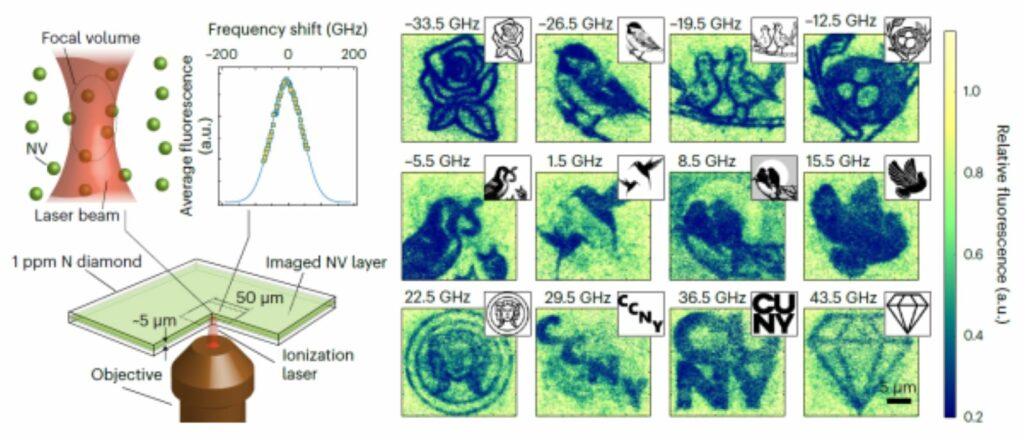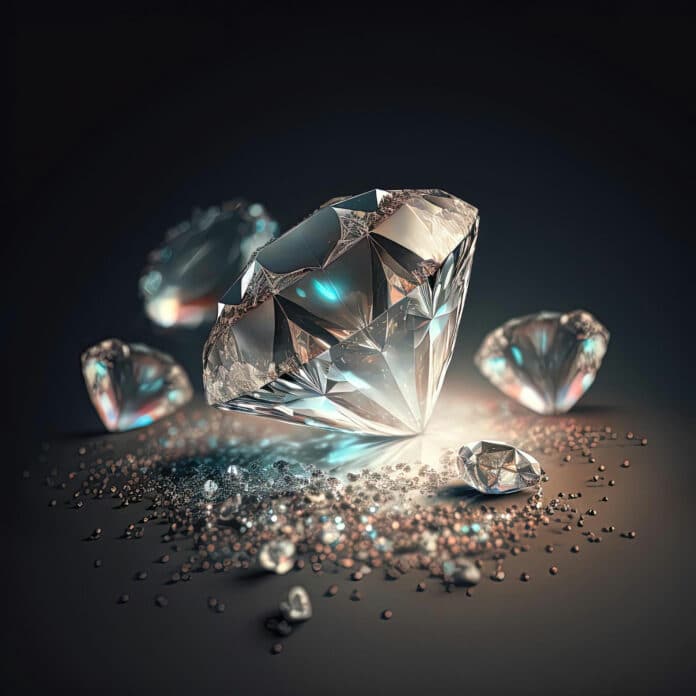Wide-bandgap semiconductor color centers have metastable charge states amenable to interconversion at specific wavelengths under optical stimulation. Optical diffraction has thus far limited the memory capacity of these systems, even though the unique fluorescence and spin characteristics in each of these states have been used to demonstrate the storage of classical information in three dimensions.
A method physicists at The City College of New York have created could improve diamonds’ optical data storage capacity. Multiplexing the storage in the spectral domain makes this feasible.
Scientists mainly focused on “color centers,” minuscule components found in diamonds and related materials. These are light-absorbing atomic defects that provide a foundation for so-called quantum technologies.
They controlled the electrical charge of these color centers very carefully. For this, they used a narrow-band laser and cryogenic conditions. Doing so allowed scientists to essentially write and read tiny bits of data at a much finer level than possible, down to a single atom.

The “diffraction limit,” or the most minor diameter a beam may be concentrated to, roughly scales as half the wavelength of the light beam. This limit determines the resolution of optical memory systems (for example, green light would have a diffraction limit of 270 nm).
Delord said, “So, you cannot use a beam like this to write with a resolution smaller than the diffraction limit because if you displace the beam less than that, you will impact what you already wrote. So normally, optical memories increase storage capacity by making the wavelength shorter (shifting to the blue), which is why we have “Blu-ray” technology.”
The CCNY optical storage method avoids the diffraction limit, which sets itself apart from previous approaches by taking advantage of the minute color (wavelength) variations between color centers that are separated by less than the diffraction limit.
Monge, a postdoctoral fellow at CCNY who was involved in the study as a Ph.D. student at the Graduate Center, CUNY, said, “By tuning the beam to slightly shifted wavelengths, it can be kept at the same physical location but interact with different color centers to change their charges selectively — that is to write data with sub-diffraction resolution.”
“Another unique aspect of this approach is that it’s reversible. One can write, erase, and rewrite an infinite number of times. While some other optical storage technologies are also able to do this, this is not the typical case, especially regarding high spatial resolution. A Blu-ray disc is again a good reference example — you can write a movie in it, but you cannot erase it and write another one.”
Journal Reference:
- Monge, R., Delord, T. & Meriles, C.A. Reversible optical data storage below the diffraction limit. Nat. Nanotechnol. (2023). DOI: 10.1038/s41565-023-01542-9
